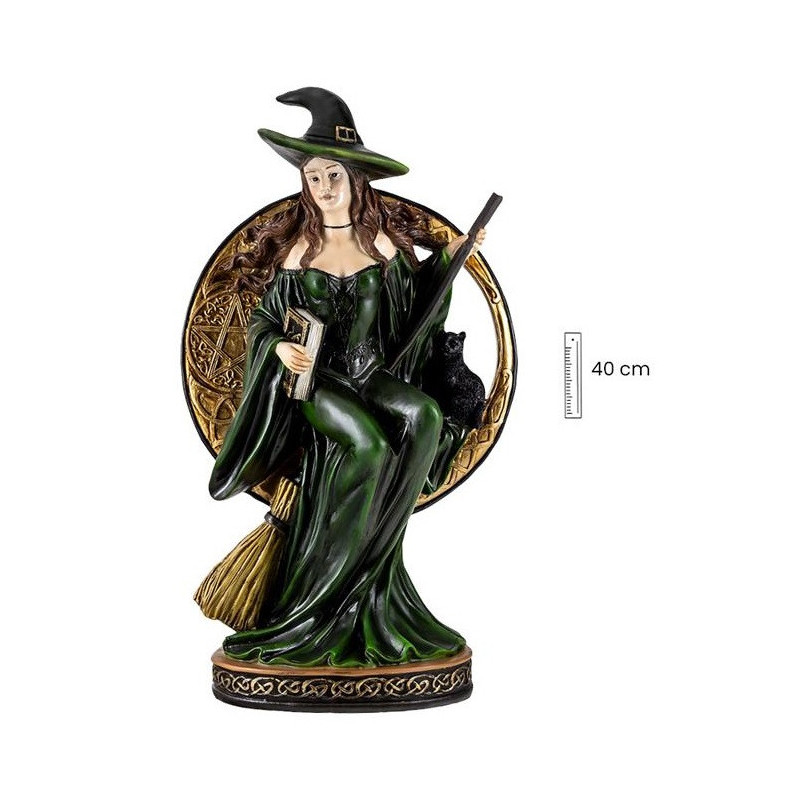





Image of Witch
Size: Approximately 40 cm tall.

Security policy

Delivery policy
Witch is the name given to a woman who supposedly possesses knowledge about hidden powers of nature, enchantments and magic. For centuries, witches have been associated with negative stereotypes, persecuted and punished for their beliefs and practices.
The very origin of the name "witch" derives from this persecution: brucia, an Italian expression that means "burning", from the verb bruciare ("to burn").
Until the mid-20th century, the predominant view of witches was that constructed during the Middle Ages. In books, children's stories, cinema and theater, they were always portrayed as old women in ragged, dark clothes, with hunchbacks, big noses and a terrifying high-pitched laugh.
They were also described as extremely bad women, with cannibalistic, libidinous habits, devoid of scruples or morals.
Black magic appears as the main activity of witches, which they would use to defeat their enemies or simply harm people. The pointy hat, the black cat, the cauldron and the flying broom are other elements that reinforce the stereotype of the Satanist witch.
Around the 13th century, with the first Inquisition, the Catholic Church recognized the existence of witches and persecuted them relentlessly.
Most women, considered suspected of practicing witchcraft by the inquisitors, were arrested, tortured, and forced to incriminate themselves. Finally, they were murdered, often burned at the stake.
Contemporary vision
At the end of the 20th century, the stereotypical and negative view of witches began to be socially challenged. In the 1970s, in the wake of the countercultural movements of the previous decade, neopaganism emerged in Europe and the United States, a set of different modern religious currents influenced by pre-Christian European cults.
The neopaganist movement preaches, among other things, that the witch would, in fact, be a priestess of ancient religions. With the arrival of Catholicism, she was persecuted and demonized.
In 1986, Wicca, the largest neo-paganist current, was officially recognized as a religion in the United States. Its members call themselves witches, practice magic, venerate nature, deities of European antiquity and consider witchcraft to be the "oldest of religions".
Since the 1970s until now, therefore, a new view of witches has been disseminated. That they would be, in addition to being priestesses of ancestral cults, women of power, a threat to the patriarchy, which has persecuted them for centuries.
In 1979, American writer Marion Zimmer Bradley published the novel The Mists of Avalon. The work tells the life of the mythical King Arthur, but with a completely new approach: female figures star in the story.
Morgana Le Fay, for example, Arthur's half-sister traditionally portrayed as a witch and villain, is described in the work as a sacred priestess of the Celtic cult of the Great Mother. The work was a best-seller with immense repercussion, helping to reinforce the interpretation neopagan about witches.
The Halloween
Halloween is celebrated in several Western countries annually on October 31st. The date was created in Ireland and the tradition grew and spread throughout the world through the United States.